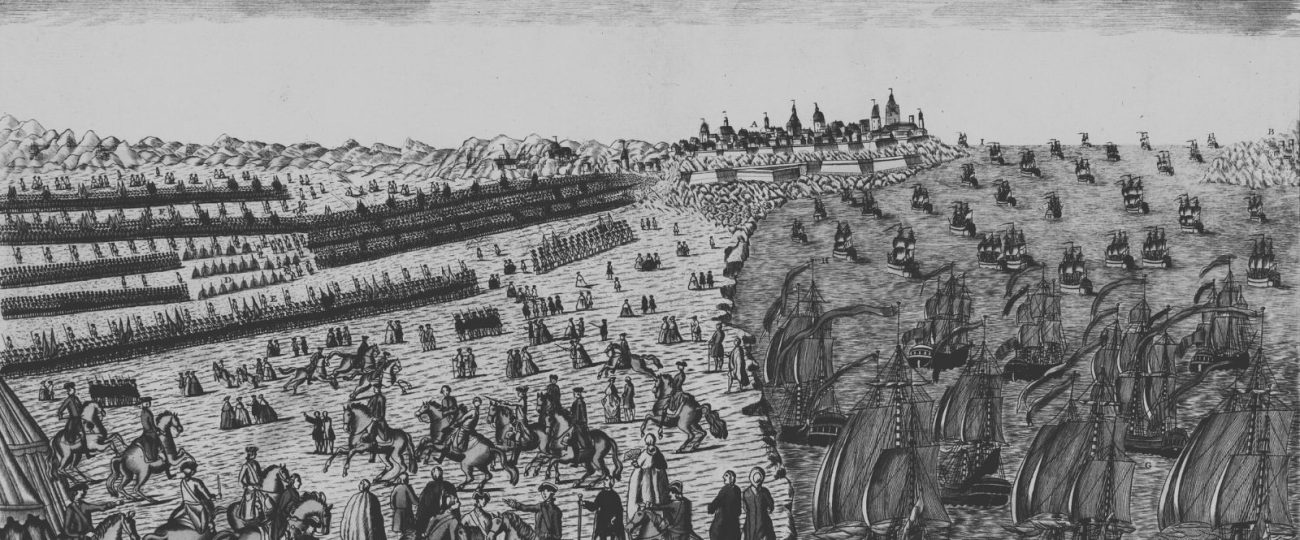What Happened On October 19th?
On the morning of October 19, 1781, British troops under General Lord Cornwallis stood ready for their surrender in Yorktown, Virginia. After weeks of unrelenting artillery fire and complete isolation from reinforcements, Cornwallis had no choice but to concede defeat. Unwilling to face the humiliation in person, he claimed illness and sent his second-in-command, General Charles O’Hara, to formally surrender to the American and French forces.
The British soldiers, weary and defeated, marched out of their fortifications as American and French troops lined the road in silence. O’Hara approached French General Rochambeau to hand over Cornwallis’s sword, but Rochambeau deferred to General George Washington. Washington, adhering to strict military protocol, refused to accept the sword directly and instructed O’Hara to present it to his second-in-command, General Benjamin Lincoln. Lincoln, who had suffered the humiliation of surrendering Charleston to the British the previous year, now had the honor of accepting Cornwallis’s surrender.
As British soldiers stacked their muskets, many lowered their heads, avoiding eye contact with their victors. Reports from witnesses indicate that the British band played a somber tune, possibly “The World Turned Upside Down,” which symbolized the unexpected turn of events. For the American and French forces, who stood observing the scene, it was the culmination of a hard-fought siege that had finally broken British power in the American colonies.
Washington and his allies had executed a masterful campaign to trap Cornwallis. Cornwallis had retreated to Yorktown, expecting reinforcements from the British navy. However, French Admiral de Grasse had already blocked the Chesapeake Bay, preventing any escape or resupply by sea. Cornwallis, hemmed in by land and sea, watched as his army’s supplies ran out and his defenses crumbled under constant bombardment.
A key moment in the siege occurred on the night of October 14th, when American and French troops launched their final assault on the British fortifications. Alexander Hamilton, eager to prove his leadership abilities, led the attack on Redoubt No. 10, where his men used only bayonets to overrun the British defenders. Simultaneously, French forces captured Redoubt No. 9, dealing another blow to the British defense. These victories left Cornwallis’s remaining forces exposed, and further bombardments made their situation unsustainable.
Cornwallis, desperate to avoid total defeat, attempted a last-ditch escape on the night of October 16th. He ordered his men to cross the York River in small boats, hoping to regroup on the opposite shore. However, a sudden storm scattered his boats and thwarted the plan. Realizing that further resistance was futile, Cornwallis began surrender negotiations the following day.
Among the British ranks at Yorktown were hundreds of formerly enslaved men who had been promised freedom in exchange for fighting alongside the British. Throughout the war, the British had offered emancipation to enslaved Africans who joined their cause, a promise that attracted many. However, after the British defeat, their futures were uncertain. Some managed to flee with the retreating British forces, but many were captured and returned to enslavement. The fate of these men, who had fought for their freedom but found themselves abandoned, reflected the harsh realities of the promises made during the conflict.
The French played an indispensable role in the success at Yorktown. French artillery crews and engineers worked tirelessly to help build siege lines and emplacements that allowed the American and French forces to advance closer to the British positions. French cannons bombarded the British day and night, weakening their defenses until they were no longer tenable. The French navy’s control of the Chesapeake Bay ensured that Cornwallis had no chance of receiving reinforcements or escaping by sea. Without the assistance of their French allies, the Americans would have struggled to corner Cornwallis as effectively as they did.
The speed and coordination of the march from New York to Virginia were also remarkable. Washington and Rochambeau managed to move their combined forces over 400 miles in just a few weeks, catching the British by surprise. Washington’s use of deception in this campaign further contributed to the success. He had convinced British General Henry Clinton in New York that the Americans planned to attack the city, when in fact, they were headed south to trap Cornwallis. This maneuver not only showed Washington’s strategic genius but also highlighted the importance of swift action in bringing Cornwallis to his knees.
After the surrender, Washington demonstrated his respect for military tradition by inviting the British officers to a formal dinner. Although Cornwallis did not attend, his officers accepted Washington’s gesture of civility. This dinner served as a reflection of Washington’s character, as he sought to end the war with dignity and honor, even after achieving a momentous victory. The atmosphere, while polite, carried the weight of what had just occurred: the British forces had been decisively defeated, and the tide of the war had shifted permanently in favor of the American cause.
Although the surrender at Yorktown effectively ended major military operations in the Revolutionary War, the conflict did not formally conclude until the Treaty of Paris was signed in 1783. British forces still held some territory in North America, but Cornwallis’s defeat dealt a blow from which the British could not recover. The capture of his army forced the British government to recognize the futility of continuing the war, leading them to seek negotiations.
French forces left Yorktown with great admiration from their American counterparts. The alliance between France and the United States, forged out of mutual necessity, had proven to be the key to success. French troops, artillery, and naval power had been indispensable to the victory at Yorktown, and without their help, Cornwallis might have escaped or fought on. The cooperation between the French and American forces during the siege cemented their bond and demonstrated the effectiveness of their combined efforts.





